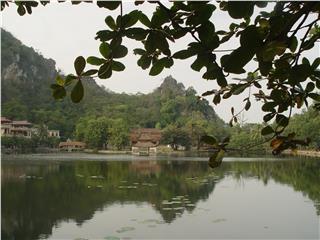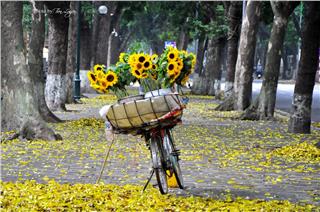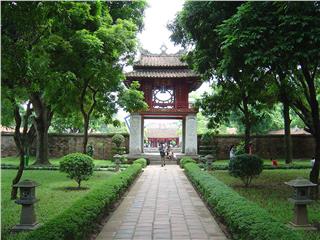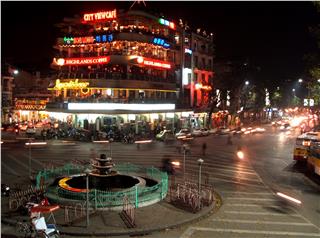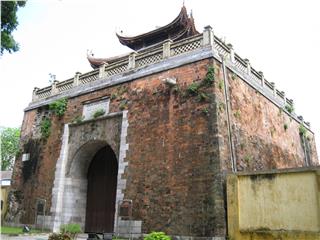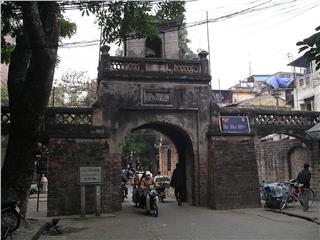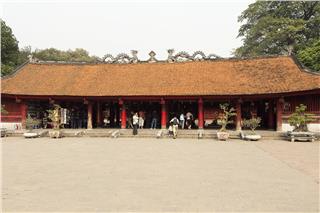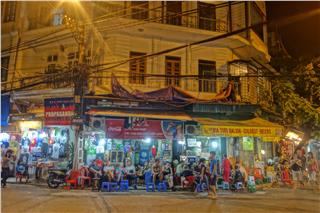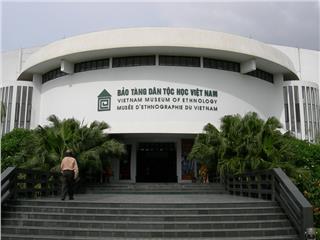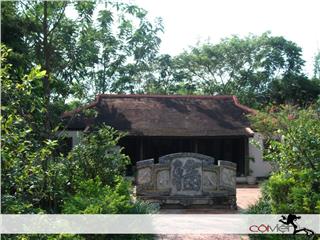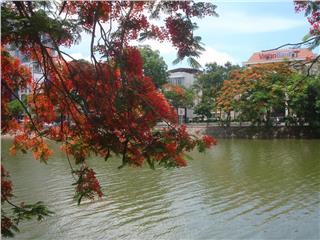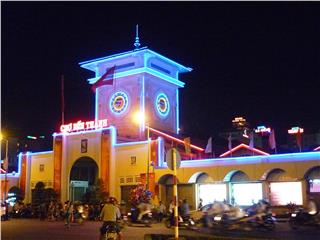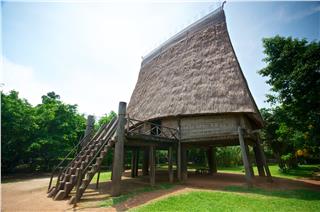Thang Long pottery in Thang Long Citadel
Thu, 06 Nov 2014 . Last updated Mon, 01 Jun 2015 14:12
-
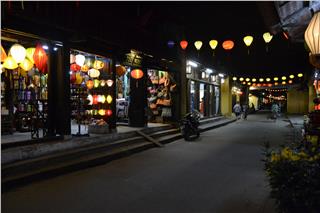 Hoi An travel to New Moon Festival 7231 viewed
Hoi An travel to New Moon Festival 7231 viewed -
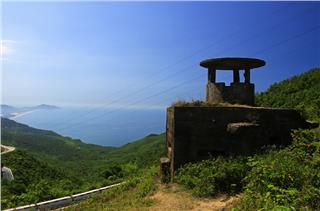 Vietnam War bunker near Da Nang 6705 viewed
Vietnam War bunker near Da Nang 6705 viewed -
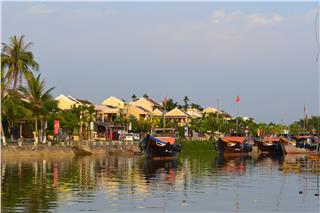 Ancientness of Hoi An ancient town 6618 viewed
Ancientness of Hoi An ancient town 6618 viewed -
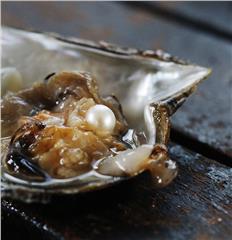 Discovering pearl in Phu Quoc Island 6123 viewed
Discovering pearl in Phu Quoc Island 6123 viewed -
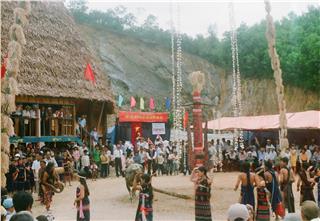 Discovering the Co Tu village in Quang Nam 5980 viewed
Discovering the Co Tu village in Quang Nam 5980 viewed -
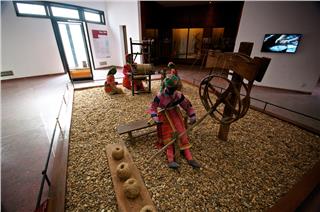 Cultural identity of ethnic groups in Vietnam Museum of Ethnology 5941 viewed
Cultural identity of ethnic groups in Vietnam Museum of Ethnology 5941 viewed -
 Visit Trang An complex in Ninh Binh 5844 viewed
Visit Trang An complex in Ninh Binh 5844 viewed -
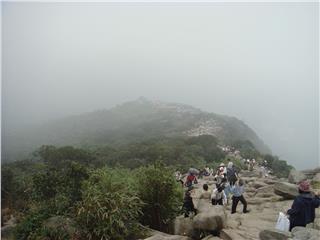 Yen Tu Pagoda and records of Vietnam 5813 viewed
Yen Tu Pagoda and records of Vietnam 5813 viewed -
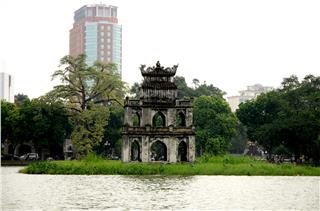 Hanoi Vietnam to Hoan Kiem Lake 5684 viewed
Hanoi Vietnam to Hoan Kiem Lake 5684 viewed
Besides important findings about architectural traces, many pottery products that were used for daily activities in the imperial palace over centuries and were symbolic of the royal culture of Vietnam have been found in Imperial Citadel of Thang Long.
These discoveries open up a new door for the studies of Thang Long pottery and pottery ware used in Thang Long Imperial Citadel through the dynasties. Pottery products found at the archaeological site at No. 18 Hoang Dieu are important objects proving that under the Ly dynasty, Vietnamese people could make as sophisticated objects as people under the Chinese Song dynasty could. Earlier, many foreign scholars said that apart from brown pattern pottery, other kinds of pottery of Vietnam were imported from China. There were no scientific foundations saying that artisans from the Ly dynasty could produce such sophisticated white and jade glazed ceramics. Pottery collections of the Ly dynasty found in Thang Long by the French in the early 20th century were often referred to as “Song pottery”. However, this hypothesis has been shaken because of the new credible evidence found at the excavation site.
In many spots, archaeologists found many high quality porcelains with white, green, jade, brown, and yellow glaze from the Ly dynasty. Despite the similarities in the darkness of the enamel color, the shape of the pottery and the shaping techniques between Song pottery and Thang Long pottery, the shape of the dragons and the floral decorative motifs are similar with the stone carved motifs in pagodas and towers built in the Ly Dynasty such as Chuong Son tower or Phat Tich pagoda.
One of the meaningful findings about the pottery of the Ly dynasty in Thang Long imperial citadel is the group of ceramics that were green glazed. This group has fascinating glazes and beautiful designs of floral and dragon motifs. This lid is one of the special specimens that show the advanced development of the green glaze under the Ly dynasty. The collection of the Ly dynasty pottery found in the imperial citadel proves that there were three basic types of designing techniques including embossing, carving, and printing with molds. Pottery items under the Ly Dynasty were elegant in shape, sophisticated and skilful in decorative motifs.
Pottery of the Tran dynasty is different from those made in the Ly dynasty in shape, enamel color and patterns. Generally, the pedestals made in the Tran dynasty are not as carefully made as those of the Ly dynasty. The patterns of the pottery made in the Tran dynasty were also not as sophisticated as those of the Ly dynasty’s. For single-colored pottery, besides the products with carved patterns, the Tran dynasty also features patterns printed with moulds. It seems that this form of patterns were very popular in the Tran dynasty because they are much more diverse than those of the Ly dynasty’s pottery. One of the most outstanding pottery products of the Tran dynasty in the imperial citadel was a big jar with a lid decorated with images of lotus flowers and vines. This is one of the outstanding specimens of the Tran dynasty’s brown pottery in Vietnam.
However, it is the pottery products of the Le dynasty that prove Thang Long pottery was royal pottery. In order to classify the quality of the pottery found in the imperial citadel, researchers have divided the items of the Le dynasty into three small periods: the Early Le period (15th century), the Le-Mac period (16th century), and the Restored Le period (17th – 18th centuries). In general, the pottery items in the Le-Mac and Restored Le period were of poor quality, with simpler decorative motifs. The majority of the pottery items were found in kilns in Hai Duong and Bat Trang. This shows a big difference in comparison to pottery from the Early Le dynasty.
Pottery from the Early Le Dynasty strongly developed with the establishment of large pottery centers, especially in Hai Duong. In this period white-blue glaze, white glaze and colored pottery reached the peak of aesthetics and sophistication. The National Museum of Vietnamese History still keeps a white-blue pottery jar with images of a swan, which was found in a wrecked ship in Hoi An, Quang Nam. This is a typical product of Chu Dau village, Hai Duong, which was made for export to international markets such as China or Indonesia.
When finishing the high-class pottery products in the wrecked ship in Hoi An, many scholars said that some products were not made in Chu Dau village but in a Thang Long pottery kiln. The statement was confirmed when archaeologists found many high-class white-blue pottery products with similar patterns with those in the ship in Hoi An at No. 18 Hoang Dieu. They were similar with the bowls decorated with images of four-claw dragon. The bottom of the bowl was carved with the character “Tru” and the body of the bowl has the character “Kinh”. The products were also like the plates with subtle images of dragon kept at the National Museum of Vietnamese History.
Both experts and antique lovers were fascinated by the white pottery products with images f five-claw dragon and the character “Quan” or “Kinh” on their bodies. After comparing with Hai Duong pottery products, experts confirmed that the products were made in Thang Long kiln. Before the archaeological site of Thang Long imperial was found, proof of royal was found in Ngoi relic site, Chu Dau, Hai Duong and in site Kim Lan site, Gia Lam. However, the royal pottery products in these site were not as sophisticated as those in the imperial citadel. Especially, the products found in the citadel were carved with words showing the palaces or the people they belong to.
Many porcelain products were also found at the relic site of Thang Long imperial citadel. Most of them broke. And they have been restored by experts. However, the remaining objects show that most of the porcelain products were decorated with patterns vines and waves according to Buddhist motif. Especially, porcelain techniques were developed in the Ly dynasty. The white porcelain pedestal decorated with the image of dragon and another pedestal decorated with the image of Apsara are clear proof of the development of porcelain techniques under the Ly dynasty.
Clearly, archaeological discoveries about the imperial city of Thang Long have open up a new important chapter for the study of Thang Long pottery. The products found here were maninly royal utensils. There were deformed or over-burnt bowls, plates, lids and lotus cup, which means they were made on the spot. Traces of the pottery kilns have not been found yet, however, based on the porcelain wastes and tools, it can be believed that there were kilns specializing in making pottery products for the imperial court around the imperial citadel in the Ly dynasty. The kilns operated till the Le dynasty and produced many high-class pottery products.
Looking at the map of the 3 circles of the imperial citadel, we can see old villages specializing in making pottery products for the royal families such as Kim Lan and Bat Trang. These villages located along the imperial citadel, has a longstanding history. Especially, three excavations during 2001 – 2003 at Ham Rong archaeological site in Kim Lan village showed traces of an ancient pottery village which had trading activities with other countries.
Besides, the pottery products are reliable proof that the architectural traces here were palaces of the Thang Long imperial citadel in the Ly, Tran and Le dynasties. The diversity of glazed terra-cotta pottery from Vietnam, China, Japan and Western Asia dating back from the 8th – 9th centuries and the 19th century is a lively and convincing demonstration of many aspects of social, cultural, and economic life of the Imperial Palace throughout history. The pottery products of different countries found at the Imperial Citadel of Thang Long give scientists a new look on the integration and cultural interaction between Dai Viet dynasties and other countries in the world and the cultural changes in the dynasties of Dai Viet.
The discoveries of Thang Long pottery are proof of the development of Vietnam’s pottery through the Ly, Tran, Le dynasties and unveil the secret about porcelain production at Thang Long kilns in the history of Vietnamese pottery. Through the development of the royal pottery, researchers can confirm the prosperity of Thang Long imperial citadel throughout 13 centuries with many craft villages. Folk artisans came here to serve aristocrats and mandarins in the imperial citadel.
The collection of millions of objects in the imperia citadel and researchers about them has reveal many secrets of the ancient Thang Long area. However, how to promote cultural values through archaeological traces and how to display objects and to help people understand more about the 1,000 – year history of Thang Long remains a problem to researcher. It has been 13 centuries since King Ly Thai To move the capital city from Hoa Lu to Thang Long. The capital city of Dai Viet’s longstanding history and culture have been confirmed through documents and traces found at the imperial citadel of Thang Long. Thang Long, the sacred land of 1,000 years old, has become a monument made of present and legends.
Source: VTC10 - NETVIET
- Tags:
- Imperial Citadel of Thang Long
- Attractions in Hanoi
- Thang Long Imperial Citadel
- Thang Long pottery


